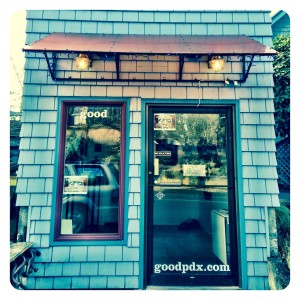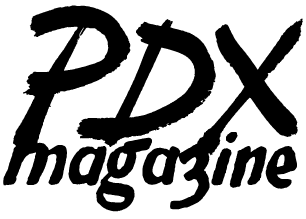“From small beginnings come great things!” It’s this phrase, breathlessly recited by a character known only as “the boy,” that gets right to the heart of Toby Froud’s live action puppet film, Lessons Learned.
In fact, the same could be said of Froud himself, who was only an infant when he appeared alongside David Bowie in Jim Henson’s 1986 film, Labyrinth. Froud’s parents, Wendy and Brian, created costumes and puppets for Labyrinth, as well as for The Dark Crystal, and their artistic influence can be seen in the creatures of Lessons Learned.
The fifteen-minute short begins on the boy’s birthday as he arrives at his grandfather’s door, where he is promptly greeted with the flick of a feather duster by the ever-harried housekeeper, Digby. After receiving a special birthday gift from his grandfather, the boy embarks on a journey that leads him through a hallway jammed floor to ceiling with boxes of “collected wisdom,” to an immense, cloudy dreamworld where he encounters beings such as the towering “granny”—a Moirai-inspired spider who furiously knits away at an impossibly long, undulating red scarf.
 The film features a magical, lush soundtrack by Lillian Todd Jones and Gordon Mills (Jones’ father, William Todd Jones, provides both the voice and puppeteering for the boy, and actually “puppeteered” Froud in several scenes in Labyrinth), and charming visual effects by Adam Sager.
The film features a magical, lush soundtrack by Lillian Todd Jones and Gordon Mills (Jones’ father, William Todd Jones, provides both the voice and puppeteering for the boy, and actually “puppeteered” Froud in several scenes in Labyrinth), and charming visual effects by Adam Sager.
Scott Foster—sculptor, fabricator, and owner of good:a gallery (pictured at right) in Northeast Portland—served as art director on the film, and has worked at Bent Image Lab, Michael Curry Design, and Laika, where he first met Froud. On the near-eve of the Portland Film Festival’s screening of Lessons Learned, Foster and I met at his gallery for a question-and-answer session on the film:
HEATHER BROMER: You met Toby Froud, the creator of Lessons Learned, while working at Laika?
SCOTT FOSTER: Yeah, we met there about two years ago when we were both sculpting characters on the set of The Boxtrolls.
HB: And did he immediately remind you of the babe?
SF: I had no idea he was “the babe.” (laughs) People at Laika were constantly saying under their breath, “Oh yeah, you know Toby? He played the baby named Toby in Labyrinth!” And I was like, “I don’t know, I don’t see the resemblance.” (both laugh) But at Laika we were working side-by-side, eight hours a day, cracking each other up, and we just became fast friends.
HB: And so later he approaches you about this personal project…
SF: Yeah. The first time I heard about it we were having dinner and catching up. Toby tells me that Heather Henson (daughter of the late Jim Henson) has a program called Handmade Puppet Dreams, and she wants to use it to keep puppetry alive in movies. And she offers Toby a grant to do (a project), and he was like, “Ok—gulp!—ok!” So he tells me, and I was like, “Gulp! Well, I’ll help you where I can!” (laughs) And so he used that money to develop the story and the first puppet prototype, and then he put together the Kickstarter for it.
HB: The Kickstarter for Lessons Learned raised double the amount that Toby asked for. Why do you think people were so generous as to not just fund the film, but overfund it?
SF: I think one reason is because Toby has a following from being in Labyrinth. It also involves Heather (Henson), so it’s a Froud-Henson production, and that hasn’t happened in thirty years. That being said, no one has seen anything like this in thirty years…not since The Dark Crystal and Labyrinth. So it’s like people are kind of hungry for it.
HB: This nostalgia combined with the power of crowd-funding to bring something back to life…
SF: Exactly. The thing is, people are still watching those movies. They have a cult appeal, but nothing new has been done since then—especially after Jim Henson died. So our goal is to bring back that style and maybe eventually make a feature length puppet movie. We want whatever the next project is to be in the same Froud-ian “world” but bigger—more characters, a bit more…more…
HB: …Grand! Sweeping!
SF: Epic! (laughs)
HB: Do you feel like there’s a kind of growing backlash against the use of CGI in films?
SF: I’ve been doing practical effects since the ’90s, and then I started doing stop-motion in ’97 on The PJ’s, and then basically all the stop-motion work went away because everyone was doing CGI. Then you noticed right away in 2003 or 2004, people turning back towards stop-motion and live action because CG was looking too plastic. People see that puppets cast shadows and move in organic ways. Things don’t look perfect, and I think that’s what people appreciate. CG is too smooth, too slick and glossy. It doesn’t have the same grit and texture to it.
HB: The imperfections make it believable.
SF: Yeah, it has a handmade look. That’s what we wanted to do with this: put the art back into the production of the movie. Actually build everything instead of just saying, “Well, we’ll do that digitally. And we’ll do that digitally. And we’ll do that digitally too.”
HB: It seems to fit in with Portland because there’s been this push towards traditional crafts and the handmade. It’s like, “Don’t just carve that piece of wood—make the knife you’re going to use to carve that piece of wood with!” And you see that mindset manifest itself in a lot of ways here…
SF: Well, I think there’s a level of craftsmanship here, and an appreciation for the handmade. And Portland in particular is really supportive of that, from handmade clothes and custom-made whatever, to movies. It’s like, “Of course we’re going to do a movie this way, we live in Portland!” I don’t know, I’ve always just been a maker. I get crabby if I’m not doing something with my hands. Keeps me out of trouble!
HB: What if suddenly, for unexplainable reasons, no one here could make anything? Do you think that Portland would immediately turn into a hellhole of crime and debauchery?
SF: Pretty much, yeah. (both laugh)
HB: Speaking of being a maker, you have your own studio practice, and you run an art gallery, good:a gallery, in Northeast Portland. As the art director on Lessons Learned, were you able to bring some of your own artistic style to the project?
SF: Because I use to build sets, I did a lot of rigging. There was a scene where I had to figure out how to make water come up through a brick floor. The nice thing is that the project wasn’t micromanaged, so there were little things here and there that I had my own vision for. But Toby was production designer and so we had an idea of how everything was going to look from the beginning.
HB: So you brought in a level of technical expertise?
SF: Yeah.
HB: What was the most challenging part of making Lessons Learned?
SF: The timeline? There were some long days. A week before we started filming, there was a downpour and a huge lake formed behind the studio. All of a sudden the water starts rushing into the building with the force of a fire hose. It was like, “BWUSHHHHH!” all over the place! Me and Toby and (model maker) Charles Daniels ran inside like, “Quick, what do we have?” and grabbed some Visqueen and duct tape and basically made a big band-aid.
HB: You were like, “Hey guys! I figured out the solution to that scene with the water!”
SF: (laughs) “Here’s our water effect! Get the camera over here!”
HB: Ok, well…aside from that, what was your own “lesson learned” from working on the film?
SF: I guess my “lesson learned” is that Toby likes to do things himself and he’ll say, “No, I’ll figure this out!” when…
HB: …so you learned a lesson about how bad he was at…
SF: Well…wait, what? (laughs) No, just that you have to learn…I learned a lot in the sense of…of how amazing all those volunteers were?
HB: (pauses) Did they get college credit?
SF: They got, uh, trail mix.
HB: Oh.
SF: We had pizza a couple times?
HB: Well, dang! You guys need help on your next project?
SF: Probably. Although next time we might film in eastern Oregon…from a helicopter! Epic!
Lessons Learned, the 2014 Official Selection of the Portland Film Festival, premieres Thursday, August 28 at Cinema 21. Details and tickets are available at www.portlandfilmfestival.com.
Scott Foster’s good:a gallery is located at 4325 N Mississippi Ave. The gallery will host an artist reception for Leah Gerrard’s show Shadow, Persistence, Detail, on Friday, September 5. More information can be found at www.goodpdx.com.

